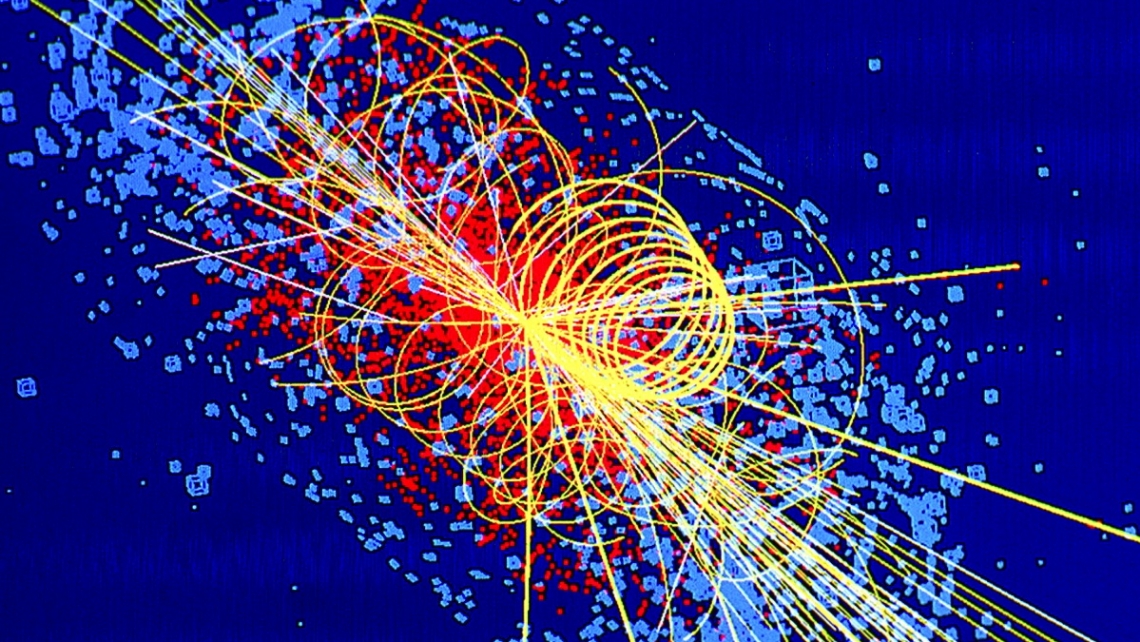The exploration of scientific phenomena often leads to profound philosophical inquiries. One such phenomenon is the Higgs boson, colloquially referred to as the “God particle.” This subatomic particle, though elusive and invisible, serves as a crucial component in our understanding of the universe. In examining this particle through the lens of Bahá’í teachings, we can uncover deeper insights into the relationship between faith and reason, belief and evidence.
The Intersection of Science and Spirituality
Bahá’í teachings advocate for a harmonious relationship between science and religion. The reality of the Higgs boson exemplifies this intersection. While the particle can neither be seen with the naked eye nor experienced directly, its presence is inferred through rigorous scientific experimentation and mathematical modeling. This principle mirrors the Bahá’í belief that spiritual truths, though not always materially observable, hold profound significance and impact on human existence.
The Nature of Belief
Belief is often rooted in trust, experience, and evidence. The nuclear physics community, through the CERN experiment in Geneva, has affirmatively detected the Higgs boson. Herein lies a fascinating question: How do we reconcile the acceptance of such scientific truths with Bahá’í paradigms that encourage belief in the unseen? The teachings present an intriguing framework, emphasizing the need for evidence and inquiry while simultaneously allowing for belief in higher cosmic realities that extend beyond physical perception.
The Bahá’í faith encourages individuals to employ both their intellect and their innate capacity for spiritual understanding. This dual approach enables adherents to apprehend principles that, although they may not directly witness, resonate within the broader tapestry of existence. Thus, belief in the Higgs boson can serve as a microcosm for understanding the infinite nature of Divine realities.
Evidence versus Faith: A Coalescence
The debate between faith and empirical evidence is as old as philosophy itself. Yet, within the framework of Bahá’í teachings, this dichotomy is dissolved. Bahá’ís are encouraged to investigate truth through observation, analysis, and critical thinking, all while maintaining an inherent trust in the Divine. This progressive approach allows for the integration of perspectives, leading to a more holistic understanding of both the visible and the invisible realms.
For instance, consider how scientists have accumulated extensive data regarding the interactions and properties of the Higgs boson, establishing a theoretical basis for its existence. This effort is reminiscent of the spiritual journey where faith is nourished by a quest for knowledge and understanding. Just as scientists must gather multiple forms of evidence to substantiate their claims, individuals seeking spiritual truths must engage thoughtfully with doctrine, history, and logic to form a coherent belief system.
The Relevance of the Higgs Boson in Understanding Creation
When contemplating the nature of the universe, the Higgs boson plays a pivotal role in the narrative of creation. Its existence is vital for understanding how particles acquire mass, thereby enabling the formation of galaxies, stars, and ultimately, life itself. Bahá’í literature places significant emphasis on the interconnectedness of creation, shedding light on the divine orchestration behind all existence. The Higgs boson can thus be viewed as a fundamental instrument of divine will, enabling the cosmos to unfold in a manner that aligns with the will of God.
This perspective encourages Bahá’ís to appreciate scientific discoveries like that of the Higgs boson as manifestations of divine creativity. The understanding that material phenomena possess inherent spiritual significance deepens one’s appreciation of both science and religion as complementary quests for truth.
Embracing the Unknown
In an age dominated by materialism and empirical evidence, the Bahá’í teachings encourage an embrace of the unknown. The mystery surrounding the Higgs boson serves as a poignant reminder that not all knowledge can be easily ascertained or understood. Just as scientists continue to probe the depths of quantum physics and grapple with unanswered questions, so too do Baḥá’ís accept that Enlightenment and spiritual truths gradually unfold over time. This acceptance nurtures a more profound sense of patience and inquiry, fostering a resilient attitude towards uncertainties.
This dynamic interplay between the known and the unknown not only enriches the individual’s spiritual journey but also deepens one’s understanding of the universe’s complexity. This aligns seamlessly with the Bahá’í recognition that higher realities exist beyond human comprehension, inviting individuals to delve deeper into their quests for meaning.
Concluding Thoughts
The discourse surrounding the Higgs boson encourages reflection on the nature of belief, the essence of truth, and the broader implications of scientific exploration within the context of spiritual understanding. Bahá’í teachings illuminate this journey, advocating for a synthesis of science and faith, urging individuals to expand their horizons of knowledge and perception, and to discover the beauty in both the seen and the unseen. Through this lens, the Higgs boson does not merely represent a scientific breakthrough, but rather a profound symbol of the interconnected web of existence, echoing the Bahá’í principle that all truth is one, and all faith and knowledge lead towards a greater understanding of the Divine.
